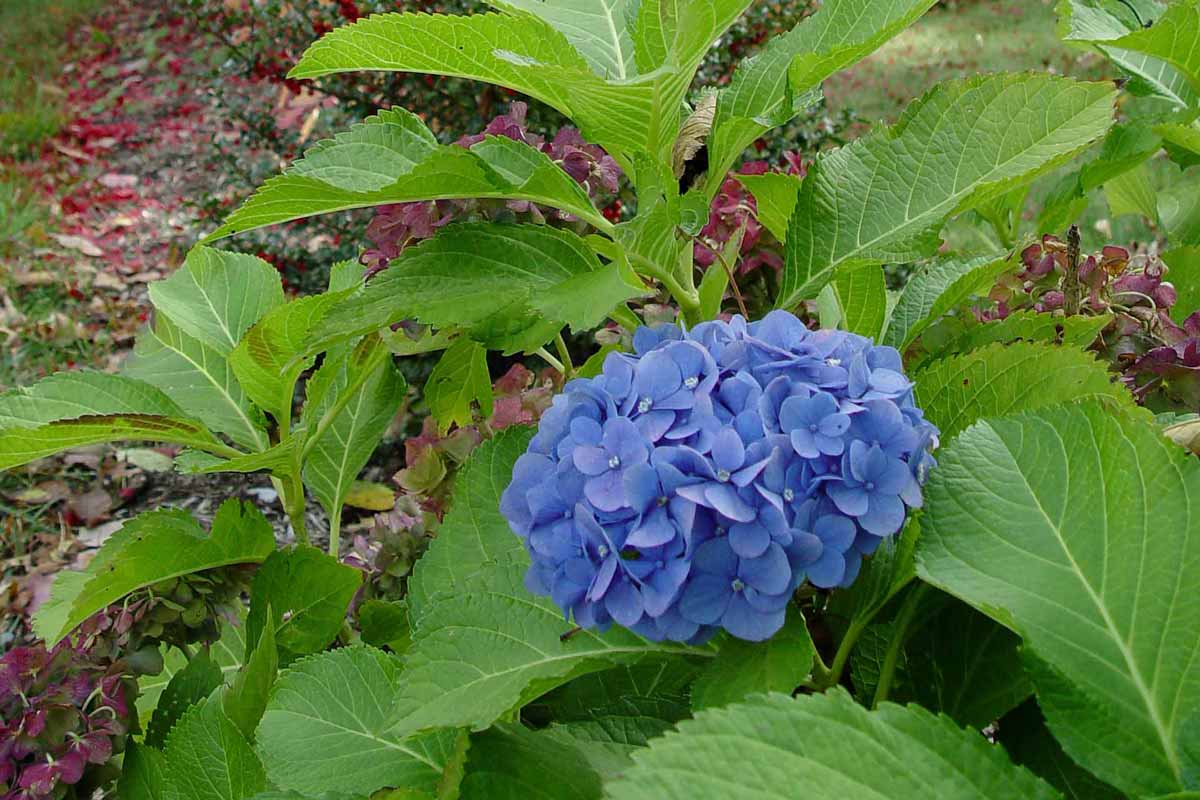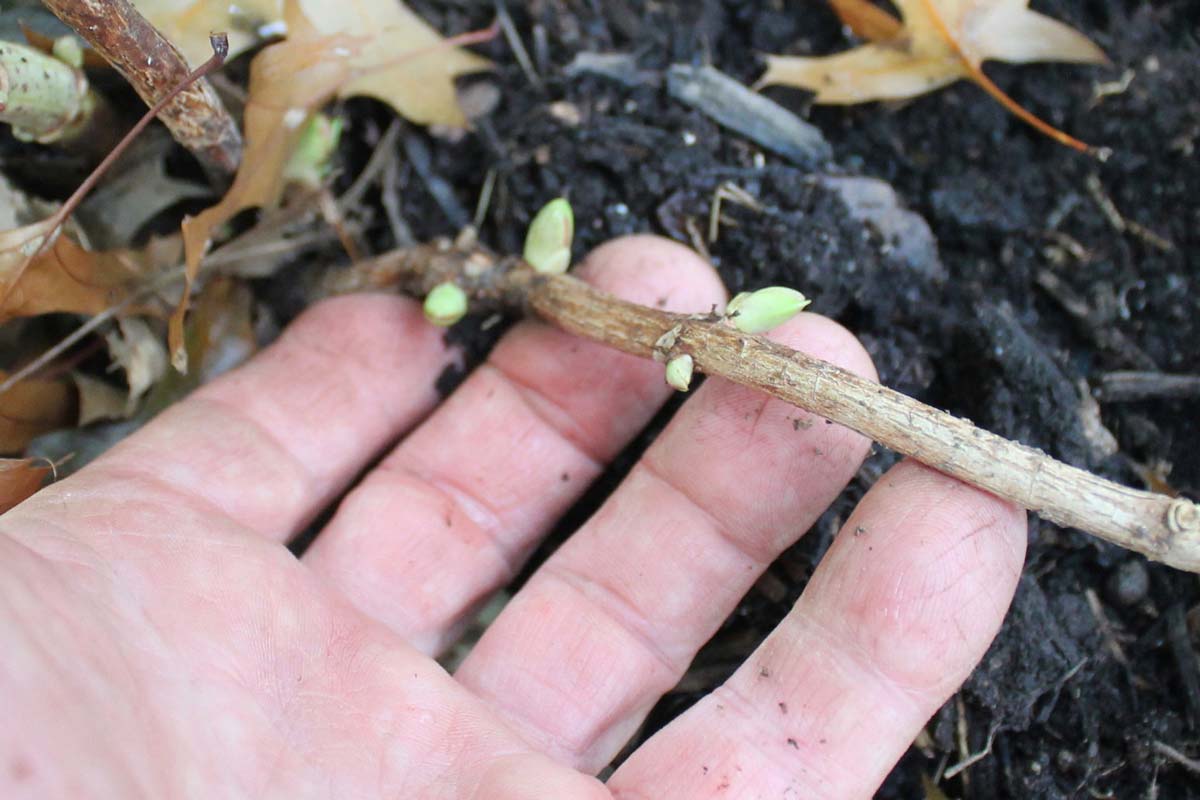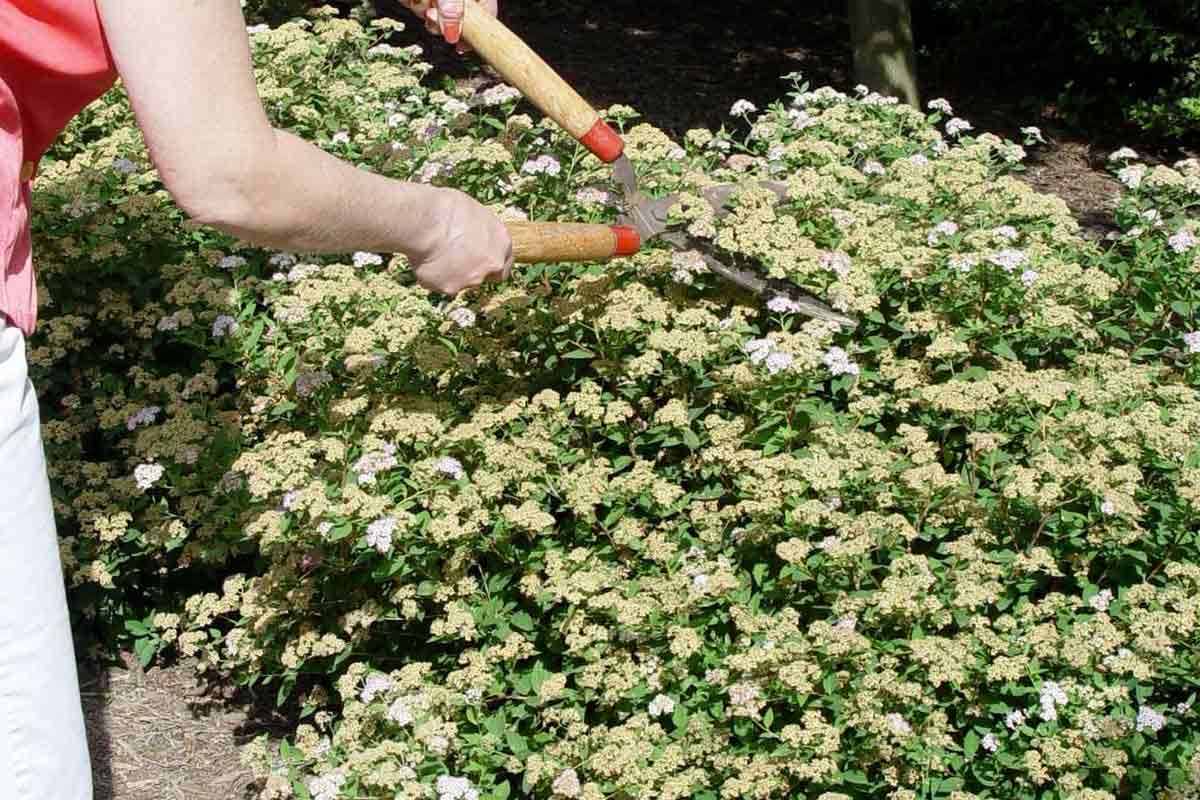Is Fall a Good Time to Prune?
Should you prune your plants in your garden and landscape this fall? The answer is no. Read to find out when you should prune your garden.

This hydrangea is blooming again in fall, as you can tell from the burning bush leaves that have fallen in the background. George Weigel
A common fake-out in the late-summer and fall landscape is when plants that already bloomed earlier in the year, suddenly start blooming again.
This unexpected repeat, which often happens to popular spring-bloomers such as azaleas, lilacs, forsythias, and magnolias, leads some gardeners to wonder whether something is wrong.
Not to worry. These encore performances are usually the result of some plants’ genetic tendency to rebloom or a consequence of erratic weather ups and downs – or both.
In the tree and shrub world, later-season reblooming usually happens to plants that produce their flowers on “old wood” – i.e. branches that were in place the previous season. What normally happens is that this wood produces flower buds late in the season, then those buds lay dormant over winter and open the following spring.

The buds of most spring-blooming trees and shrubs are formed on “old wood” the season before. George Weigel
Some plants, though, have adapted to produce flowers on both old and “new wood” (i.e. on branches that grew in the current season) and are naturally more prone to blooming at two different times. Azaleas, rhododendrons, hydrangeas, forsythias, magnolias, spireas, cherry trees, and roses are the most common examples.

Removing flower heads ASAP and cutting back old growth can stimulate many plants to rebloom later. George Weigel
Many perennial flowers are also now available that have been selected for their ability to bloom a second time. These do that by putting out a continuous or second set of buds that flower a second time in the same season, especially when the first round of flower heads are cut off ASAP. Or when the entire plant is cut back after the first flowering finishes.
Reblooming daylilies are best known, but catmint, salvia, black-eyed susans, and coneflowers also are good at repeat blooming. Reblooming iris varieties that bloom both in spring and fall also are now available.
After natural reblooming, a second explanation for a second bloom is erratic weather. What happens in this scenario is that a plant that blooms on old wood produces a new round of next-season blooms in late summer or early fall as usual. But instead of them going dormant all winter, a cold spell in fall is followed by an extended warmup later in fall, essentially tricking the plant into “thinking” spring has already arrived.
This bloom usually doesn’t amount to more than a smattering of flowers – not the full flowering of the “real” spring bloom.
Reblooming doesn’t harm a plant. However, in woody plants, any flower buds that open in fall won’t be available to bloom again in spring. So the main downside of repeat blooming is that it can lessen the spring show.
The bottom line is that if you see things blooming in September, October, or November that really shouldn’t be, don’t worry - just enjoy the show.